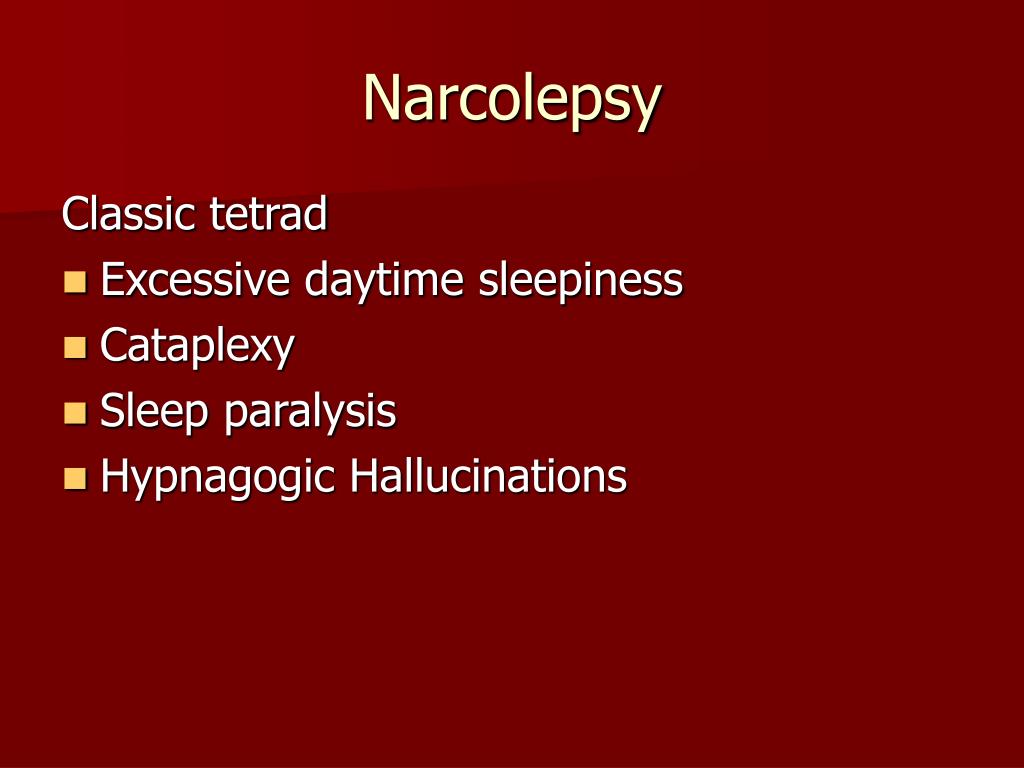

A person having such an attack is fully awake and knows what is happening. Cataplexy can be mild – such as a brief feeling of weakness in the knees – or it may cause a complete physical collapse, resulting in a fall. People with narcolepsy may become drowsy or feel foggy at very unusual times, even in dangerous situations, such as while driving.Īttacks of cataplexy – sudden, brief losses of muscle strength – are sometimes the first symptom of narcolepsy, but more often develop months or years after the onset of sleepiness. These “naps” tend to be short and may be refreshing, at least for a short period of time. They tend to fall asleep not only in situations in which many people normally feel sleepy (after meals or during a dull lecture), but also when most people would remain awake (while having a conversation, writing a letter, or watching a movie). People with narcolepsy report feeling continually tired or sleepy all the time. The symptoms of narcolepsy can appear all at once or can develop gradually over many years, and in up to one-third of patients, sleepiness is the only symptom.ĭaytime sleepiness is present in all narcoleptics and is usually the first symptom that appears. In most cases, excessive daytime sleepiness is the most bothersome symptom. The four most common symptoms of narcolepsy are: 1) excessive daytime sleepiness, 2) cataplexy, 3) sleep paralysis, and 4) hypnagogic hallucinations. Some researchers have suggested that a problem with the gene responsible for making hypocretin, combined with other factors in a person’s life, may cause the disorder. Recent studies have found low levels of a brain chemical called hypocretin in people with narcolepsy. Sometimes narcolepsy runs in families, but many people with narcolepsy do not have relatives who are affected. Narcolepsy is not caused by psychiatric or psychological problems. In people with narcolepsy, these events (the lack of muscle tone or the dream experiences) occur at inappropriate times while they are awake. Other symptoms, such as cataplexy ( loss of muscle tone at times of strong emotion) and sleep paralysis are similar to the loss of muscle tone of dreaming that accompanies a normal part of sleep called REM. The symptom most easily understood is the sleepiness, which is just the brain being unable to control when the individual falls asleep. As a result, sleep or parts of sleep intrude into wakefulness. Although a cure for narcolepsy has not yet been found, most people with this disorder can lead nearly normal lives under the proper treatment.Īlthough the exact cause is presently not fully understood, narcolepsy appears to be a disorder of the part of the brain that controls sleep and wakefulness. Recent advances in medicine, technology, and pharmacology (the study of the effects of drugs) are helping healthcare professionals to diagnose and treat this condition. It can be misdiagnosed as depression, and often has other associated sleep disorders present. If not recognized and appropriately managed, narcolepsy can drastically and negatively affect the quality of a person’s life. Typically, a person with narcolepsy suffers sleep attacks as well as continual sleepiness and a feeling of tiredness that is not completely relieved by any amount of sleep. Narcolepsy is a sleep disorder defined by constant sleepiness and a tendency to sleep at inappropriate times. These are facts you might not know about narcolepsy, but your friends and neighbors who suffer from this sleep disorder know how serious an issue it is. Its impact on a person’s life can be significant, even disabling.

Approximately one in 2,000 people have this condition.


 0 kommentar(er)
0 kommentar(er)
